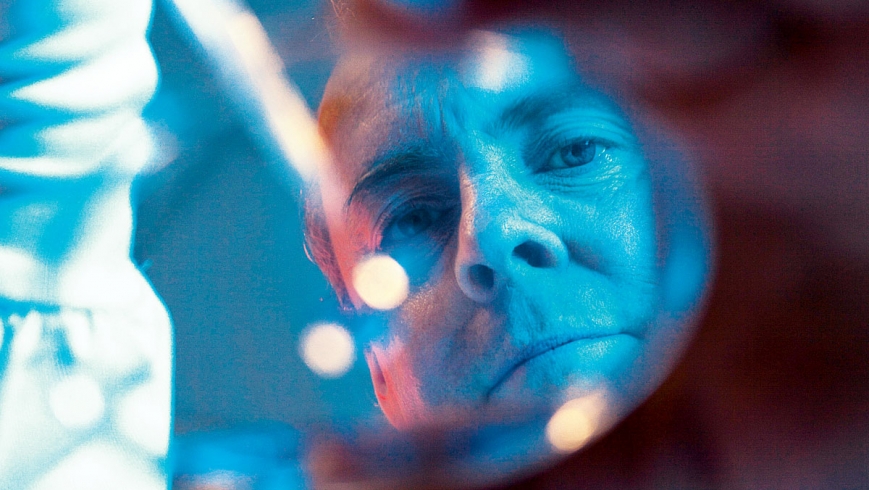– Click through our carousel above for a picture gallery from the centre
Dairy
Innovation Australia, housed in an unassuming brick building on
Werribee’s Princes Highway between Melbourne University’s Veterinary
School and Werribee police station, is responsible for testing and
developing many of the yoghurts, cheeses and long-life products we consume.
The 35 scientists and engineers who
work in the centre spend countless hours researching ways to improve our
favourite dairy foods. Their findings are passed on to some of the
nation’s biggest dairy companies, which use the information to create
new foods and tweak existing products.
The centre also prides itself on
helping the companies make their products in a more efficient and
sustainable way, reducing water and electricity use and increasing value
for money.
Dairy Innovation Australia opened in Werribee six years ago, funded by the dairy industry.
Members, which include Murray Goulburn,
Tatura Milk, Fonterra, Parmalat, National Foods, Warrnambool Cheese and
Butter, and national body Dairy Australia, produce more than 70 per
cent of our milk and 65 per cent of manufactured dairy products.
The centre spends about $9 million a
year on research and development. Most of its research is
pre-competitive, meaning it is shared with all its members.
Commercial manager Mark Fink says it
might seem a strange decision to base the centre in Werribee, hundreds
of kilometres from Victoria’s dairy regions, but it makes perfect sense
to the industry.
“The Victorian dairy industry makes up
70 per cent of Australia’s dairy industry,” Fink says. “Melbourne is
central to the dairy regions, and in Werribee we are close to the Port
of Melbourne.”
The centre has a freezer to store live
bacterial cultures used to make 50 per cent of the nation’s cheese. The
cultures are stored in pots at minus 40 degrees until they are ready to
be sent to cheese-makers.
It’s Donald Maxwell’s job to oversee the development of the cultures.
The Point Cook resident has worked for
Dairy Innovation Australia for two years. Along with the other
scientists and technicians who work in the centre’s microbiology lab, Maxwell is responsible for creating new strains of bacteria that can be used in cheese cultures.
Maxwell says it is important that the
lab continually creates new strains of bacteria because existing strains
can be susceptible to phage – viruses that infect the bacteria and
prevent cultures from transforming milk sugars into lactic acid.
“If we have a phage attack, we would lose production of a cheese,” he says. “Phage kills the cultures.”
Maxwell says that to ensure there is a
constant supply of healthy, phage-resistant cultures available to dairy
companies, the lab challenges the cultures it develops with all the
phage it has. Cultures that pass the test are given specially developed
food so that they multiply and are then stored in the freezer.
Maxwell says one of the challenges the lab faces is creating bacterial strains that don’t affect the taste of a product.
“The product needs to taste the same
when it is made with the new cultures. Cultures can deliver different
types of flavours, so we have to watch for that.”
He says the work done in the lab is
essential to the dairy industry, helping it to compete with
international companies. “Our research and development is helping the
industry. Over the last 10 years the dairy industry has had a tough
time.”
Geraldine Walker loves exploring the science behind food.
The food technologist works in Dairy Innovation Australia’s sensory lab, testing, tweaking and taking a close look at foods such as milk, cheese, chocolate and ice-cream. Her work involves analysing the texture, flow and particle size of food, and its smell and taste.
“We look at how ingredients perform. By doing background tests we can better understand how to tweak ingredients,” Walker says.
“Sensory science helps manufacturers to determine formulation changes and lets them know if a consumer can spot the difference between ingredients.”
The Hoppers Crossing resident has worked at Dairy Innovation Australia since it opened.
Most of her work is pre-competitive research but there are times when she is asked to test a product for a specific company.
To prevent bias, the product is presented to Walker blindly.
She hopes that in time the centre will be able to conduct food trials in its sensory lab using members of the public.
“We are hoping to recruit panellists to help with trials
to find out what flavours they prefer, if they can pick the difference
between two different samples, that sort of thing.”
Growth in the number of Australian
long-life dairy products being exported overseas is keeping Bacchus
Marsh’s Mark Schleyer busy.
The senior process engineer works in
Dairy Innovation Australia’s pilot plant – a small-scale production
facility used to make long-life custards, desserts and, of course, milk.
Schleyer’s work involves creating products and flavours and testing new ingredients.
Some of the tweaked products are passed to the sensory lab for testing.
The plant can produce about 100 litres
of custard or milk per hour, which Schleyer says is a small amount
compared with the large-scale plant at the nation’s dairy factories.
The plant also has the ability to
remove water from dairy foods, and separate milk to take out the lactose
and leave the protein.
“We can also change composition of
powders for use in soup or infant milk powder, helping us to create new
products,” Schleyer says.
The plant is also where the centre conducts research into sustainable production methods.
Schleyer says the centre funds research
each year, with recent projects including studies into ways of reducing
energy use during milk-powder production.







